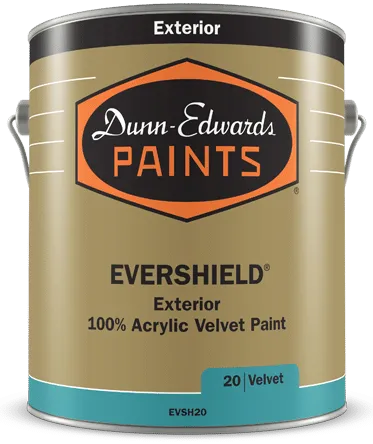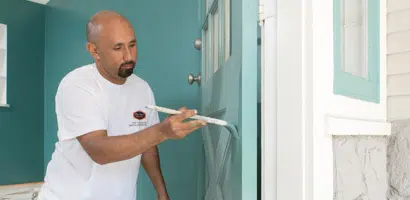Use a Paint Pro, Enjoy Long-Lasting Results
07/11/2015 | Dunn Edwards |
Just about any tradesperson can put paint on a wall and ask for payment, but it takes a true professional painter to take the long-term view — at 5 to 12 years of durability — when doing the job for a property or community manager.
Anticipating and preventing coating failure requires consideration of proper and proven surface preparation, choice of paints and application methods. Fact is, the actual painting is the easier part of the job — while the tough part lies in the critical phase of surface preparation. Some painters do more prep, some do less. But, keeping in mind that poor surface preparation is responsible for most paint failures, it makes sense to be aware of the how the presence of adverse conditions — moisture, in particular — can affect painted surfaces.
Moisture is the biggest problem to watch for on wood surfaces. Moisture may build up in a poorly ventilated building and can actually push coats of paint away from the surface. A lawn sprinkler may wash a wall repeatedly causing wet and dry rot, rusty nails heads, or blistering and peeling paint that loses its adhesion from damp or wet surfaces. Wood siding starts out being tight and smooth but moisture works to open the cells and pores of the wood — separating the tight graining and allowing for even more moisture to intrude. It takes a high level of knowledge, experience and a conscientious effort to correct and cure these potential paint problems.
Stucco surfaces can also be affected by moisture. Unless the surface is sealed by a quality water sealer or paint coating, moisture can be absorbed into the very porous stucco surface and cause problems on interior walls or furnishings. Moisture in the stucco can set off another common problem known as efflorescence, a white powdery salt resulting from the alkaline salts in the Portland cement used in the stucco mix. If this salt is not removed, the efflorescence can chemically burn coatings of paint, causing the paint to blister and peel off from the high-alkaline area.
The growth of mildew is also related to moisture. It is a black or brown fungi that usually looks like dirt but doesn't wash off with water. Mildew loves damp wood areas — feeding off the protein thickener additives in latex paints or the cellulous of the wood beneath the paint film. In some cases, if the moisture is high enough to support them, mold and mildew can thrive on the constantly shady side of stucco buildings. Failure to treat existing mold and mildew results in this living organism growing right through the new coating, causing discoloration.
The presence of moisture and the subsequent failure to properly treat wrought-iron fences, gates, railings, galvanized rain gutters and down spouts — as well as many other ornamental metal and iron surfaces on your buildings — will lead to unsightly areas and, later, expensive replacement. Experience and knowledge of the necessary preparation and primers available to protect metal surfaces will save a great deal of money down the road.
The act of painting is both a craft and a science so, when you are considering a painting project, it really pays to ask a qualified, experienced expert from a professional paint manufacturer for specifications and referrals. This will assure you enjoy greater durability and appearance and will save you stress and money in the future.















